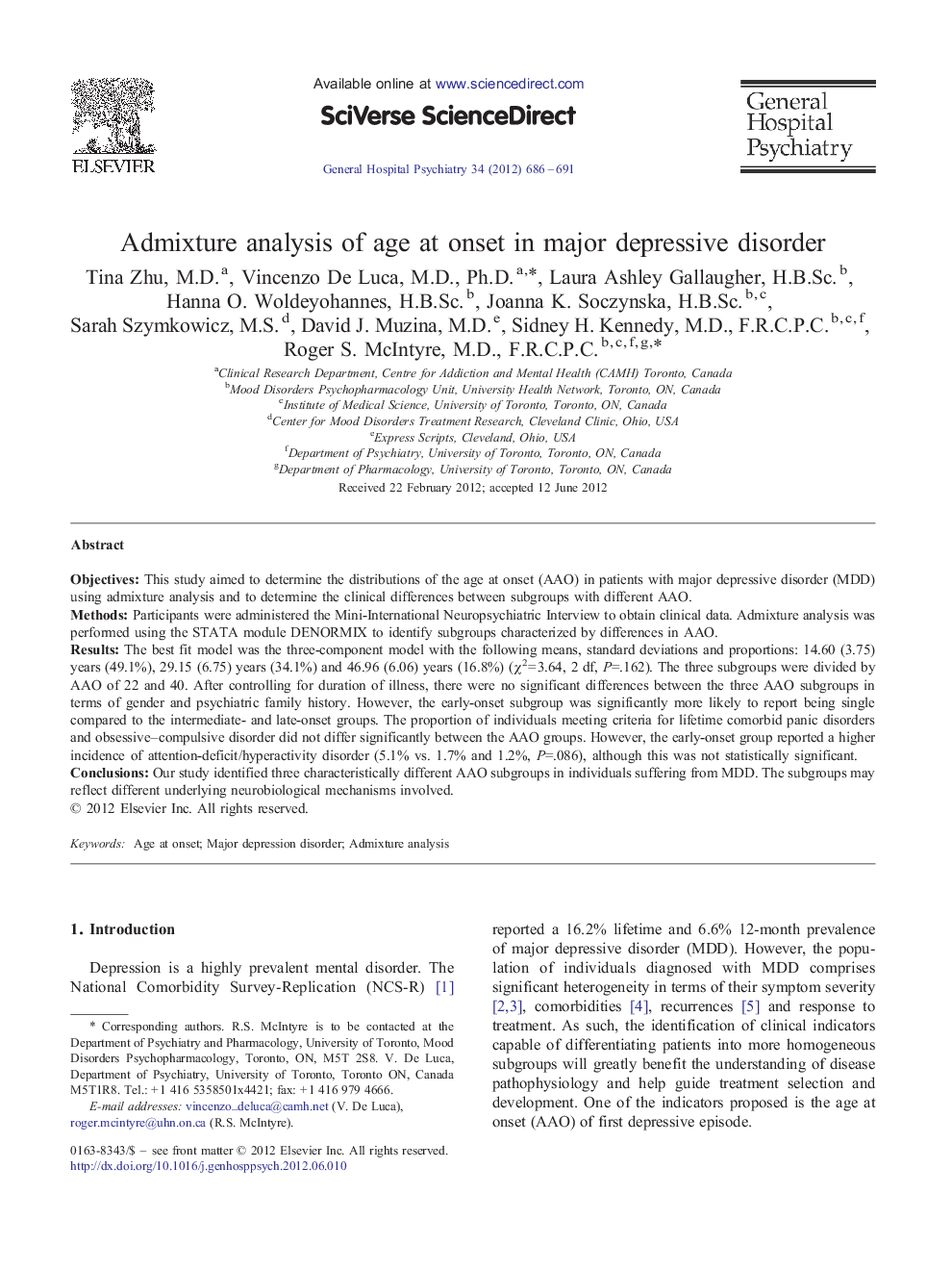| Article ID | Journal | Published Year | Pages | File Type |
|---|---|---|---|---|
| 3237766 | General Hospital Psychiatry | 2012 | 6 Pages |
ObjectivesThis study aimed to determine the distributions of the age at onset (AAO) in patients with major depressive disorder (MDD) using admixture analysis and to determine the clinical differences between subgroups with different AAO.MethodsParticipants were administered the Mini-International Neuropsychiatric Interview to obtain clinical data. Admixture analysis was performed using the STATA module DENORMIX to identify subgroups characterized by differences in AAO.ResultsThe best fit model was the three-component model with the following means, standard deviations and proportions: 14.60 (3.75) years (49.1%), 29.15 (6.75) years (34.1%) and 46.96 (6.06) years (16.8%) (χ2= 3.64, 2 df, P=.162). The three subgroups were divided by AAO of 22 and 40. After controlling for duration of illness, there were no significant differences between the three AAO subgroups in terms of gender and psychiatric family history. However, the early-onset subgroup was significantly more likely to report being single compared to the intermediate- and late-onset groups. The proportion of individuals meeting criteria for lifetime comorbid panic disorders and obsessive–compulsive disorder did not differ significantly between the AAO groups. However, the early-onset group reported a higher incidence of attention-deficit/hyperactivity disorder (5.1% vs. 1.7% and 1.2%, P=.086), although this was not statistically significant.ConclusionsOur study identified three characteristically different AAO subgroups in individuals suffering from MDD. The subgroups may reflect different underlying neurobiological mechanisms involved.
